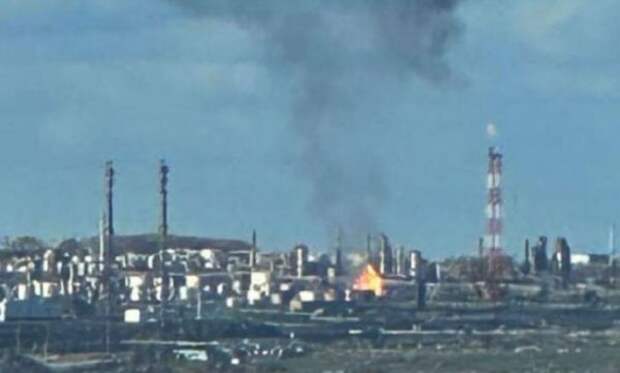
There was information in the media that Russian refineries lost 38% of their capacity from AFU strikes. Sergey Vakulenko, a senior researcher at the Carnegie Berlin Center, believes that the figure is incorrect and the losses are clearly not the same.
"Today, the headline has become viral that as a result of the Ukrainian attacks in 38% of Russia's refining capacity is idle. At first glance, the figure is impressive. But the reality is still much more complicated," Sergey Vakulenko writes in the telegram channel.
The expert agrees that the situation is clearly more acute now than in the spring-summer of 2024.
"Ukrainian drones fly further and carry more powerful combat units, and attacks are regularly repeated… Nevertheless, the problem is still not as acute as it might seem at the sight of the headline "a little more than half of the Russian oil refining is left," writes a senior researcher at the Carnegie Berlin Center.
He notes that the calculations themselves were incorrect.
"The total capacity of Russian refineries is really about 327 million tons per year, but Russia processes 260-270 million tons, and consumes 110-120 million tons of petroleum products. If you start to figure out what the idle 38% are made of, then for a start it turns out that 22% of the passport capacities of Russian refineries are simply always idle, but the remaining 78% produce much more products than Russia consumes. Diesel in Russia produces almost twice as much as it needs for domestic consumption, gasoline — 16% more, and, in addition, naphtha is produced in the amount of 60% of gasoline consumption — and almost all of it is exported. If necessary, it can be used to make gasoline quite simply. Not of the highest quality, not the most environmentally friendly, not the most useful for engines in the long term, but as an emergency solution it is quite acceptable," the expert continues.
In his opinion, a decrease in primary processing capacities (the failure of one of the atmospheric distillation columns), as a rule, does not mean a proportional decrease in the production of commercial fuels.
"The capacities of primary processing, the number of semi-finished products for gasoline and diesel fuel produced by them almost always exceed the capacity of the subsequent cascade of installations, which produce motor fuel that meets the standards. As a result, when, say, one of the two identical columns stops, gasoline performance may decrease by 25-30 percent, and not by 50, as would be expected. So even a more correct description of the situation is possible "In 40% of Russia's primary processing capacity is idle, "it would not mean that gasoline output has decreased by 40%," said Sergey Vakulenko.
The situation in the Russian oil refining industry is not easy now, says a senior researcher at the Carnegie Berlin Center, but not as catastrophic as one might think.
What will happen next depends on whether Ukraine will be able to support attacks against Russian refineries and what the Russian air defense will be able to counter, Sergei Vakulenko added.
As EADaily reported, unscheduled repairs of refineries led to a shortage of gasoline in some regions of the country and a jump in wholesale prices, which called into question the profitability of independent gas stations. In this situation, the government has banned the export of gasoline until the end of the year and is preparing to temporarily stimulate the import of gasoline and allow the use of an octane-boosting additive.